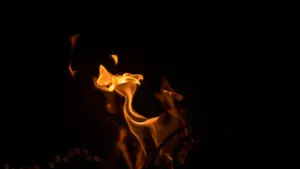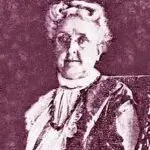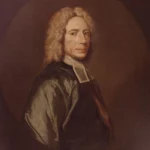Biblical Truth: When Christ returns, He will claim His people, conquer the world, and defeat the Antichrist.
Claimed!: Rev. 19:6-9.
[6] Then I heard something like the voice of a great multitude and like the sound of many waters and like the sound of mighty peals of thunder, saying, "Hallelujah! For the Lord our God, the Almighty, reigns. [7] Let us rejoice and be glad and give the glory to Him, for the marriage of the Lamb has come and His bride has made herself ready." [8] It was given to her to clothe herself in fine linen, bright and clean; for the fine linen is the righteous acts of the saints. [9] Then he said to me, "Write, ‘Blessed are those who are invited to the marriage supper of the Lamb.’" And he said to me, "These are true words of God." [NASU]
[6] This great multitude, whose voice is now lifted in praise to the Lord our God the Almighty, is the entire company of God’s servants, angelic as well as human, the doubly ‘great multitude’, so to speak, of the spiritual hosts and of redeemed humanity. The sound has the majestic beauty of many waters and mighty peals of thunder, and the hymn of praise, whose theme is one of triumph and joy as God’s creatures are brought into the unending perfection of His kingdom, is introduced by Hallelujah to become a stupendous Hallelujah Chorus.
[7-8] There is good reason to rejoice and be glad, to give expression to a superabundance of joy, because the inauguration of the everlasting kingdom coincides with the marriage of the Lamb. The imagery emphasizes in a striking way the intense love of the Lord for His own. In the Old Testament God speaks of Himself as the husband of His people; and in the New Testament the church is depicted as the bride of Christ whose advent as the Bridegroom to take her to Himself she eagerly awaits. Now the long desired moment has arrived when love blends with love in a union of everlasting perfection. For this climactic moment His bride has made herself ready. The fine linen, bright and clean in which she is arrayed for the marriage is the righteous acts of the saints. These righteous deeds are indeed performed by the bride, but they do not make up a gown of self-righteousness; for that would be cause for them in their rejoicing to give themselves the glory, whereas they are exhorted to give the glory to Him. The whole of their salvation, from beginning to end, is from God [2 Cor. 5:18], and therefore all the praise belongs to God. The oneness of the saints in Christ Jesus is owed entirely to God, thanks to whom Christ has become not only their redemption but also their wisdom and righteousness and sanctification. Accordingly, their glorying is not al all in themselves, but only and altogether in the Lord [1 Cor. 1:29-31; Eph. 2:8-10]. The righteous deeds of the saints, then, do not constitute or contribute to their justification before God, which would be self-justification; as the deeds of the saints they are performed by those who are already redeemed and justified in Christ. They are evidence of the bride’s sanctification and at the same time of her serious concern to prepare herself for the marriage of the Lamb. This preparedness is effected through the sanctifying work of the Holy Spirit transforming her progressively into the likeness of her Bridegroom [2 Cor. 3:18, 1 John 3:2-3]. Thus it is given to the bride to be clothed with fine linen for the marriage. The responsibility to live the life of pure holiness to the glory of God is not removed but is intensified by the very givenness of the Holy Spirit. The spotless righteousness of Christ which is graciously reckoned to us in our justification should increasingly be approached as in our daily conduct we walk in the Spirit; and the two will coincide at the Lord’s appearing when believers will be brought to total conformity to His likeness, which will be their glorification. At the Lamb’s marriage the bride’s robes will at last be as the Bridegroom’s, white and dazzling as the light.
[9] The angel who said, Write, Blessed are the dead who die in the Lord [14:13], now declares the consummation of that blessedness, namely, participation in the marriage supper of the Lamb. Here, too, is the fulfillment of Christ’s expectation, as expressed at the institution of His Supper: But I say to you, I will not drink of this fruit of the vine from now on until that day when I drink it new with you in My Father’s kingdom [Matt. 26:29].
Conquered!: Rev. 19:11-16.
[11] And I saw heaven opened, and behold, a white horse, and He who sat on it is called Faithful and True, and in righteousness He judges and wages war. [12] His eyes are a flame of fire, and on His head are many diadems; and He has a name written on Him which no one knows except Himself. [13] He is clothed with a robe dipped in blood, and His name is called The Word of God. [14] And the armies which are in heaven, clothed in fine linen, white and clean, were following Him on white horses. [15] From His mouth comes a sharp sword, so that with it He may strike down the nations, and He will rule them with a rod of iron; and He treads the wine press of the fierce wrath of God, the Almighty. [16] And on His robe and on His thigh He has a name written, "KING OF KINGS, AND LORD OF LORDS." [NASU]
[11] A new vision is granted John as he sees heaven opened and a rider seated on a white horse who is called Faithful and True. The rider is the incarnate and now glorified Son leading His hosts against the mass concentration of the enemy forces of evil. Rightly, and in contrast to those adversaries, He is known as Faithful and True, for He has already been designated as The Amen, the faithful and true Witness [3:14]. Of Him alone can it be said that He is absolutely the Truth [John 14:6]. Moreover, it is because He is faithful and true that in righteousness He judges and wages war.
[12-13] The description of the rider’s eyes as a flame of fire further confirms His identity as the incarnate Son in glory, for His eyes were described thus in 1:14 and 2:18. The ardent intensity of His gaze is the shining forth of His absolute truth and righteousness. The diadems betoken kingly power and authority. The diadems that John has seen on the heads of the dragon [12:3] and on the horns of the beast [13:1] signify the rebellious design of the enemy to dethrone God and usurp His royal supremacy. But the many diadems on the rider’s head are a symbol of His unassailable sovereignty which is now about to be exercised in final judgment. His absolute supremacy is indicated, further, by the name written on Him which no one knows except Himself. Where it is written is not said; but it is His own unique name, the name which is above every name in His high exaltation [Phil. 2:9], a name which can belong to no creature and to no worldly power, no matter how formidable it may for the time appear to be. The information that the rider on the white horse is clothed with a robe dipped in blood recalls the description in Isaiah’s prophecy of one who comes with garments of flowing colors … majestic in His apparel, marching in the greatness of His strength [Isa. 63:1]. This graphic portrayal of the coming Judge and Redeemer affirms the expectation that the Day of the Lord will be the day on which judgment and redemption coincide. There will be final judgment for the enemies of God and redemption in the sense of consummating deliverance and glorification for His long-suffering people. Those who have gratefully welcomed the salvation that flows from the cross on which the blood of Christ was shed for them will enter into the fullness of the blessing of that blood-shedding, while the blood of those who have despised that blood-shedding will flow from the winepress that is trodden by the Son. The symbolism is that of the execution of justice that is as awesome as it is thorough. The identity of the rider is now disclosed: His name is called The Word of God. As the Word of God the Son is both the revealer of the divine mind and also the agent of the divine will. Since the word of God never fails to effect what it decrees [Isa. 55:11], it is through Him who is the eternal Word that the will of God is brought to pass not only in creation but also in re-creation [2 Cor. 4:6] and in judgment [Acts 17:31]. Clearly, the name The Word of God recorded here is not the same as the name written on Him which no one knows but Himself and which therefore is not made known.
[14-16] Mounted, like their leader, on white horses and arrayed, like the Lamb’s bride, in fine white and gleaming linen, the heavenly hosts follow the Son to participate in this final encounter. Now in verse 15, the prophecy of Isaiah is fulfilled, that He will strike the earth with the rod of His mouth, and with the breath of His lips He will slay the wicked [Isa. 11:4; cf. 2 Thess. 2:8]. The assertion that He will rule the nations with a rod of iron implies the overthrow of the ungodly in this final judgment. The threefold imagery here of sword, rod, and winepress signifies warfare, subjugation, and destruction: the ultimate demonstration to the impenitent that God is indeed almighty. King of Kings, and Lord of Lords is the fourth name assigned in this vision to the Son in His glory. This name declares the eternal reality of His absolute power and authority over all. The location of the name on His robe and on His thigh most probably means that the name was inscribed on the robe at the place where it was draped over His thigh.
Crushed!: Rev. 19:19-21.
[19] And I saw the beast and the kings of the earth and their armies assembled to make war against Him who sat on the horse and against His army. [20] And the beast was seized, and with him the false prophet who performed the signs in his presence, by which he deceived those who had received the mark of the beast and those who worshiped his image; these two were thrown alive into the lake of fire which burns with brimstone. [21] And the rest were killed with the sword which came from the mouth of Him who sat on the horse, and all the birds were filled with their flesh. [NASU]
[19-21] The battle-lines are arrayed for the climactic conflict. The warfare is total as antichrist leads the armies of earth’s kings in this global assault on the Lamb and His throne. But the victory of the Lamb is assured [17:14], for His is the supreme power over the kings of the earth, and the authentic kings are those who have been freed from their sins by His blood. Here the beast is the first of the two beasts that appeared in an earlier vision and stands for the antichrist, and the false prophet is the second of the two beasts. Their positions, under the headship of the dragon, who is Satan, are second and third respectively in the hierarchy of evil. Their seizure and consignment to the lake of fire which burns with brimstone, which is also known as the second death [20:10,14,15], symbolizes the purging of their defiling hostility and antichristianity from creation. The rest who are killed with the sword which came from the mouth of Him who sat on the horse are the whole company of disobedient and impenitent mankind. The word of grace they have rejected becomes the word of judgment by which they are condemned. Thus, tragically, because of their blind folly and hardness of heart, the means of their salvation is transformed into the means of their damnation. The horror of their self-invited doom is intensified by the spectacle of the birds gorging themselves on the flesh of their carcasses. The graphic imagery is a solemn reminder that it is a terrifying thing to fall into the hands of the living God [Heb. 12:31].
Questions for Discussion:
1. The marriage event of the Lamb with His bride is a time of great rejoicing. How does the bride make herself ready? What are the righteous acts of the saints? Where do they come from?
2. In 19:11-16, John is granted a new vision. What are the four names given to the Son in this vision? What is the significance of these names for the actions of the Son in the vision?
3. What is the meaning of the three symbols: sharp sword, rod of iron, wine press?
4. What does the lake of fire symbolize?
5. Meditate on the contrasts presented in this passage: Lamb – Warrior; Bride – death and judgment; Faithful and True – deception; Marriage supper – lake of fire. What do these contrasts tell you about the “either/or” nature of the destiny of mankind? How can you use this passage in evangelism?
References:
The Book of the Revelation, Philip Hughes, Eerdmans.
Revelation, Grant Osborne, Baker.

















